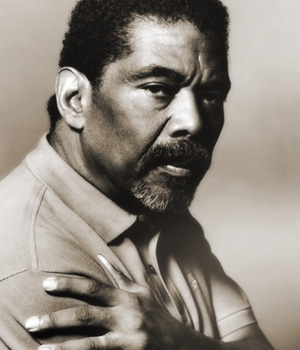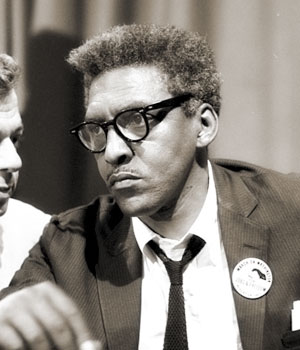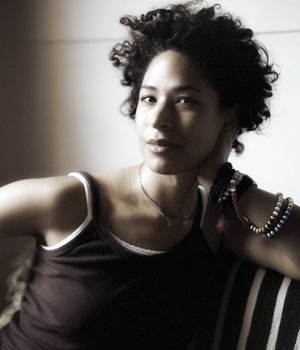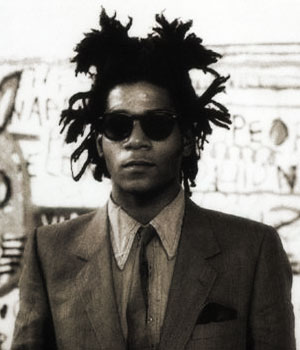LGBT Faces of Black History Month

As the struggles for racial and sexual equality continue today, we’re taking a moment to look at the brave LGBT African-Americans who helped alter the course of history for the better, advancing the rights and public perception of minorities who clearly had so much to offer, yet were dismissed, ridiculed and even assaulted when they spoke up. Many of these great icons are no longer with us today, and while there is nothing we can do to change the struggles they endured in the past, we hope to honor them and inspire future leaders by telling their stories and treasuring their memory.
Josephine Baker 
Brazenly introducing silliness and sex into the entertainment world of the early 20th Century, Josephine Baker was not only a legend of song and dance, but also an early lighthouse of feminism, racial equality, sexual expression and triumph over adversity. Homeless by the age of 12 and living off scraps on the streets of St. Louis, Baker traveled to New York City, becoming a rising star of the Harlem Renaissance, eventually relocating to Paris where she established herself the highest-paid, most-photographed woman in the world. She captured the French imagination with her charming voice and nearly-nude erotic dancing, resplendent in a jiggling skirt of phallic-looking bananas – exhoticized, but at the same time challenging the European mores surrounding race and gender in “proper” society as a powerful sexual icon who was black, something that would not yet have been possible in the U.S. In Paris she could not only indulge her taste for the company of both males and females, but was free from the oppressive Jim Crow laws of her native country.
During return visits to the States, Baker would be forced to enter the halls she performed in through the servants’ entrance and would be harassed on the street for being a black woman in fine clothing. Years later in a television interview, Baker recalled “one day, among many, I was leaving a hotel and I came upon a white woman, and she stopped and spat on me. I felt the tears running down my cheeks, but I didn’t answer her. I knew it wasn’t her fault, she’d be taught that way.”
After forever altering show business, Baker became a French citizen and later joined the French resistance during World War II as a strong opponent of Nazi ideology, faking her death and traveling with allied soldiers – and refusing to perform for segregated audiences. She later spoke at the March on Washington in 1963, and was offered unofficial leadership of the movement by Coretta Scott King, after her husband’s assassination.
Alvin Ailey 
Modern dance choreographer Alvin Ailey entered and redefined a genre of entertainment that was typically reserved for upper-class whites. A former nightclub performer with Maya Angelou, Ailey was a wunderkind of the west-coast dance-theater scene, becoming the artistic director of a major dance company at the age of 22, where he embraced an eclectic mix of classical ballet, jazz and Native American dance styles. After moving to New York in 1954, Ailey was an associate of some of the most creatively, socially and sexually progressive minds of the time, including Truman Capote, Harry Belafonte and Lena Horne. He would ultimately find the popular dance trends of the time unsatisfying, eventually choreographing his own productions that embraced his signature style-over-technique inclinations, which often included a formal, straight-legged, graceful ballet lower half, while the dancer’s upper limbs would fluctuate in a wild, contemporary, bop-jazz style madness.
Ailey found a home for these nontraditional performances when he opened the Alvin Ailey Dance theater, which became known for its multiracial cast, its use of gospel and blues music in performances (incredibly rare 1950s theater), and a keen eye for emerging cultural movements, which can be seen in all the way through to its use of hip-hop in the 1980s, a decade that would see Ailey’s untimely death at 58 from AIDS.
E. Lynn Harris 
Just look at the popularity of tales like Romeo and Juliet, Requiem for A Dream or Boys Don’t Cry, and it becomes apparent – we love our stories about tragedy. And there are few richer sources for heartrending tragedy than those of closeted LGBT persons in the dark novels of Everette Lynn Harris.
Following a suicide attempt at the age of 35, Harris began channeling his struggles into a world of fiction, writing invisible Life, a novel about a black attorney’s explosive love triangle between his married male lover and his girlfriend, coming to terms with race, sexuality and class inside the unforgiving world of New York City. Also a classic rags-to-riches American Dream story, Harris began selling his debut novel from the trunk of his car after receiving a number of rejection letters – in the coming years he would end up with ten books on the New York Times Bestseller list, before succumbing to heart disease in 2009.
Barbara Smith 
Within the Civil Rights and anti-war movements, there were currents of gender inequality to face down as well – women otherwise relegated to getting coffee or typing up letters while the men did all the thinking and talking, even in some activist circles. Coinciding with the great movements of the 1960s onward was second wave feminism, lead in part by black lesbian feminist Barbara Smith, whose work as an essayist, publisher and lecturer is known to history as opening new channels of thought and perspective, within the black community and society as a whole, for young black women.
Noted for coining the term “identity politics,” Smith commented in a 2000 interview on her image as a radical feminist “What I really feel is radical is trying to make coalitions with people who are different from you. I feel it is radical to be dealing with race and sex and class and sexual identity all at one time. I think that is really radical because it has never been done before.”
Bayard Rustin 
Behind every great leader of a movement is a strategist. Barack Obama has David Axelrod. Harvey Milk had Anne Kronenberg. Dr. Martin Luther King, Jr. had Bayard Rustin. Taking the Ghandian approach of nonviolent resistance to heart, Rustin organized the first Freedom Rides through the segregated South, eventually becoming an intimate advisor to Dr. King and convincing him to live out non-violent principles to the extent that he abandoned the armed guards who’d been protecting his family.
While arrests for civil disobedience had become a badge of honor within the Civil Rights movement, Rustin’s arrest for “sexual misconduct” with another man was a liability – prompting effective political attacks from pro-segregationists like Strom Thurmond. Though Rustin had organized the 1963 March on Washington and many other historic demonstrations that led to the 1964 Civil Rights Act and the 1965 Voting Rights Act, Rustin received little public recognition for his contributions – fellow organizers reluctant to shine too bright a light on their openly homosexual colleague.
Rustin had long been open about his sexuality, but it wasn’t until much later in his life that he became outspoken about gay rights and took his principles to the gay movement. “The gays are beginning to realize what blacks learned long ago,” Rustin said in an interview when the LGBT movement was gaining steam. “Unless you are out here fighting for yourself, than nobody is going to help you. I think the gay community has a moral obligation to continue to fight.”
Rebecca Walker 
Known as an icon of “third-wave feminism” – a term she coined herself – black feminist writer Rebecca Walker has been shedding light on the subtle oppression of women since her debut essay in Ms. Magazine in 1991. In it, Walker – the 23-year-old daughter of Alice Walker who wrote The Color Purple, took then-nominee to the Supreme Court Clarence Thomas to task over his sexual harassment controversy involving former-employee Anita Hill. In her essay, “Becoming the Third Wave,” Walker wrote: “To be a feminist is to integrate an ideology of equality and female empowerment into the very fiber of life. It is to search for personal clarity in the midst of systemic destruction, to join in sisterhood with women when often we are divided, to understand power structures with the intention of challenging them.”
Walker, who is bisexual, has continued to contribute to Ms. Magazine and many others, and authored four books, including 2007s Baby Love: Choosing Motherhood After A Lifetime of Ambivalence, in which she examines the feminists movements troubled history with motherhood, and how she found strength as both a woman and a mother.
Richard Bruce Nugent 
While historians now recognize that legendary historic figures like Leonardo Da Vinci, Oscar Wilde and Susan B. Anthony where discreetly homosexual, it wasn’t until revolutionary thinkers like Richard Bruce Nugent came along that the contemporary culture of openness began to develop among LGBT people. Nugent is known for his short story “Smoke, Lillies and Jade,” regarded as the first literary depiction of shameless gay sex by an African-American author. Co-founding the literary journal Fire! with renowned black poet Langston Hughes, Nugent lived with fellow writer Wallace Thurman in a Harlem apartment frequented by Hughes, Zora Neale Hurston, Gwendolyn Bennett and others as the informal central headquarters of the bohemian black creative community at the core of the Harlem Rennaissance. There, Nugent employed his illustrative skills by drawing deptictions of homoerotic sex across each wall of his home.
“As they undressed by the blue dawn…Alex knew he had never seen a more perfect being…,” Nugent wrote in “Smoke, Lillies Jade” with characteristic ellipses. “His body was all symmetry and music…and Alex called him Beauty…long they lay…blowing smoke and exchanging thoughts…and Alex swallowed with difficulty…he felt a glow of tremor…and they talked and…slept…”
Jean-Michel Basquiat 
Combining pop, street and African art into a creole of punk-rock expressionism, Jean-Michel Basquiat has gone down in history not only as one of the first commercially-successful black painters, but as an endless source of intrigue and infamy. A homeless, drug-exploring street kid of the late 70s New York graffiti-art scene, Basquiat first became recognized with his poetically sarcastic SAMO tag messages written around town, eventually making a name for himself as a painter of colorful abstract designs that expose – within a chaotic, insurgent style – sophisticated emotional depth and societal commentary.
Befriending Andy Warhol and other neo-expressionist painters, Basquiat eventually exploded as the most talked about (and one of the highest paid) painters of the 1980s art boom. After a brief yet exciting life of DJ’ing the best clubs, affording the best clothes, and eventually dating Madonna (Basquiat, though never putting a label on his sexual orientation, was bisexual), the lifestyle caught up with Basquiat – who died of a drug overdose at the historically-fated age of 27.
What's Your Reaction?
Josiah Hesse writes music, feature interviews and news coverage for Out Front Colorado.










